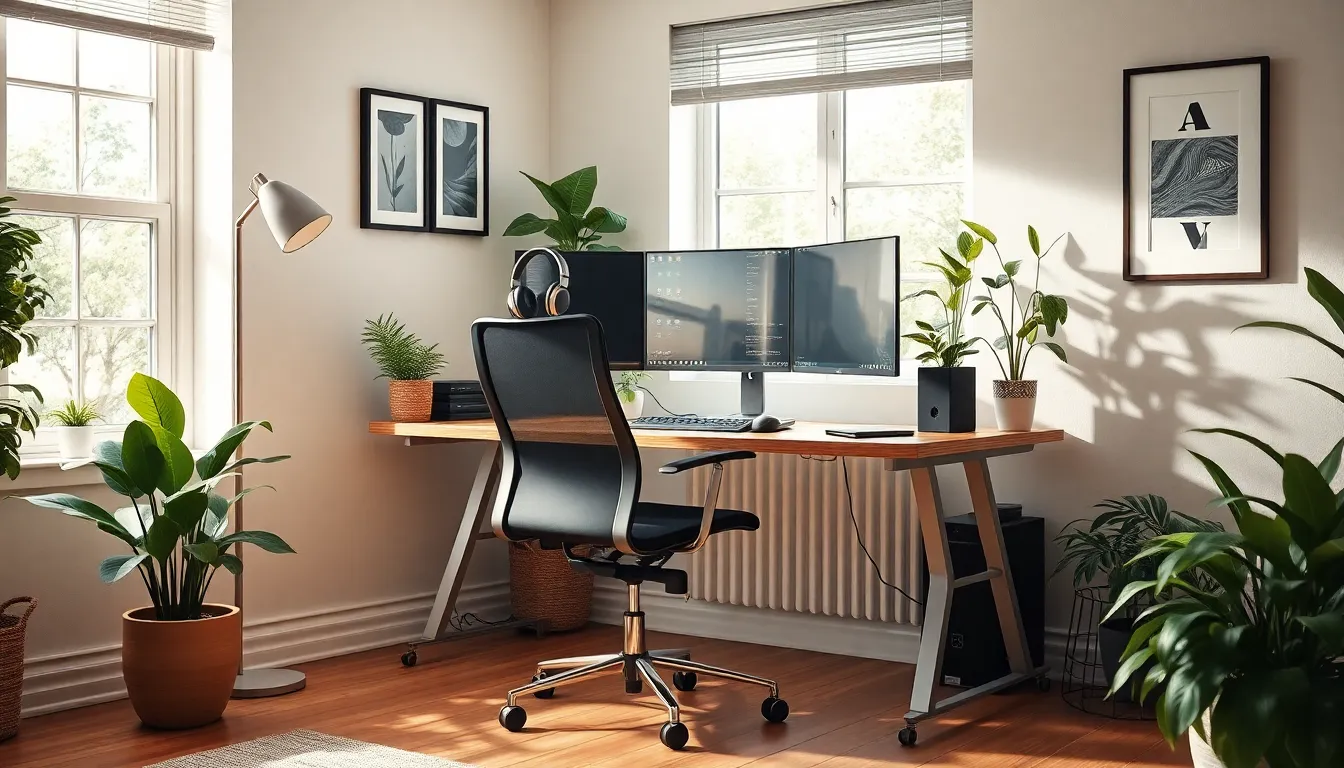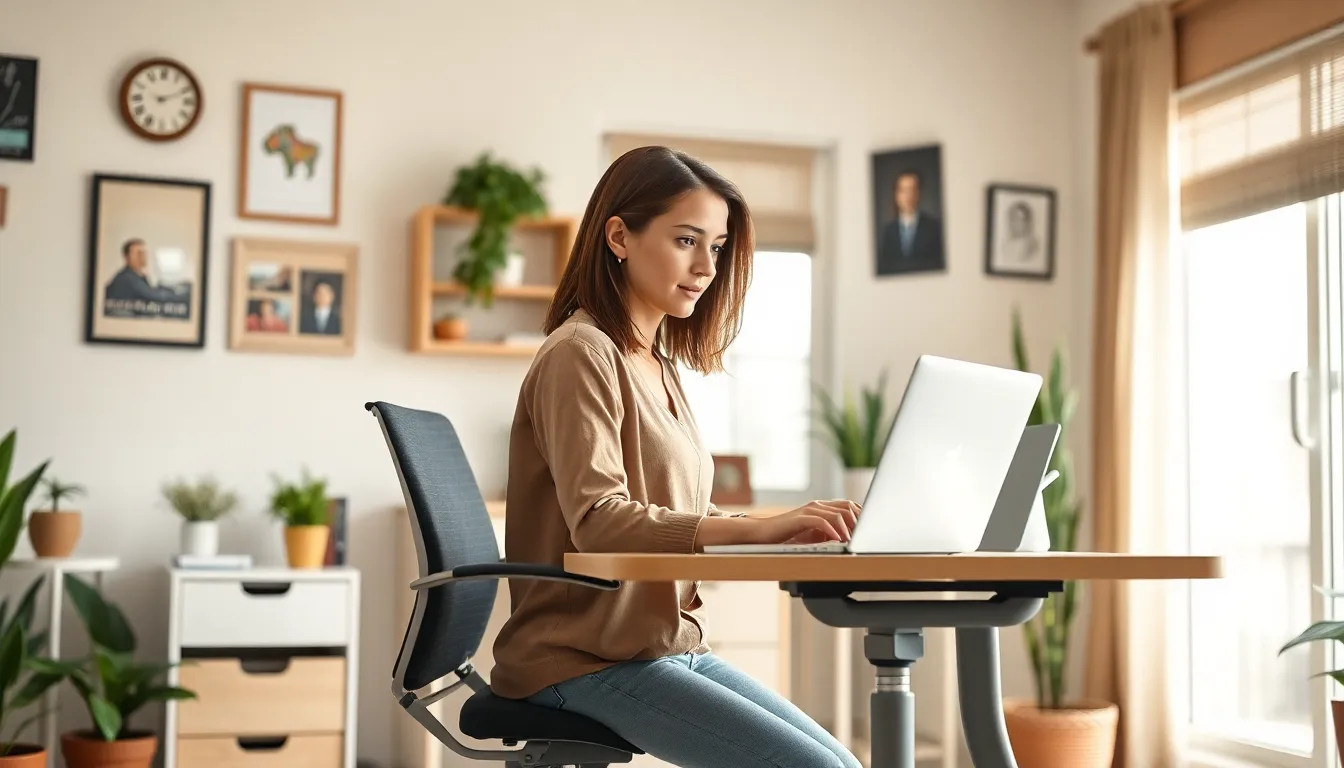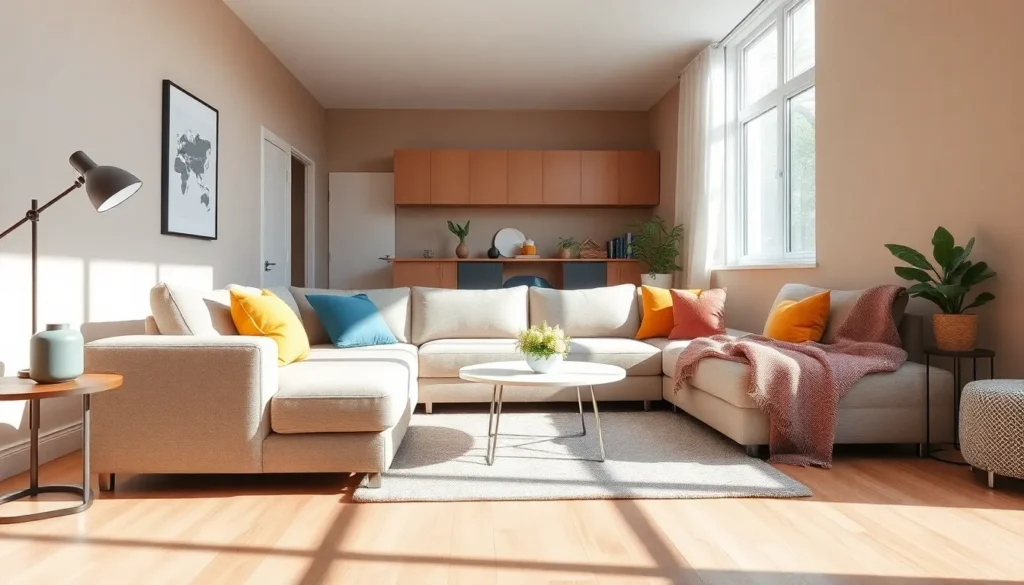In a world where the line between work and home has blurred, creating the perfect home office setup is more crucial than ever. It’s not just about a desk and a chair; it’s about crafting a space that fuels productivity and sparks joy. After all, who wants to work in a space that feels more like a dungeon than a haven?
Table of Contents
ToggleImportance Of A Home Office Setup
A well-designed home office setup significantly affects productivity. Many people find that a dedicated workspace minimizes distractions, fostering an environment conducive to focus and efficiency. Studies indicate that employees with organized workspaces experience a 20% increase in productivity compared to those in cluttered settings.
Creating comfort in a home office occurs through ergonomic furniture choices. Comfort leads to longer work hours without fatigue or discomfort. An ergonomic chair and desk can decrease the risk of musculoskeletal issues, which is crucial for long-term health.
Inspiration also plays a key role in a productive workspace. A visually appealing office with personalized decor encourages creativity. Engaging colors, plants, and artwork enhance mood, making work feel less monotonous and more enjoyable.
Adjustable lighting helps reduce eye strain and fatigue, thus contributing positively to overall well-being. Optimal lighting options, such as natural light or soft desk lamps, cater to individual preferences and task requirements.
Establishing boundaries between work and personal life strengthens time management skills. A designated workspace serves as a physical reminder to switch into work mode, which can prevent distractions from household activities.
Fostering a professional atmosphere can enhance focus and motivation. Individuals may find they adhere to deadlines better in a structured office setup compared to a casual environment, improving overall output quality.
Investing time and resources into a thoughtful home office setup often brings long-term benefits. The positive impact on morale, efficiency, and health leads to a happier, more productive work experience.
Key Components Of A Home Office Setup

A successful home office setup includes several key components that contribute to productivity and comfort. Each element plays a vital role in creating an environment conducive to work.
Desk And Chair Selection
Choosing the right desk and chair is essential for comfort and efficiency. An adjustable desk allows for sitting or standing positions, promoting better posture. Ergonomic chairs support the lower back and reduce fatigue during long hours of work. Selecting a desk that fits the space and accommodates necessary equipment can prevent clutter. Both the chair and desk should reflect a personal style, making the workspace inviting.
Technology Considerations
Integrating the right technology enhances productivity. Reliable high-speed internet ensures smooth communication and minimizes disruptions. Choosing a computer with adequate processing power supports multitasking without lag. Additionally, investing in a quality monitor or dual monitors increases screen real estate and improves workflow. Accessories like a noise-canceling headset facilitate focus in noisy environments.
Lighting And Ambiance
Effective lighting creates a pleasant workspace. Natural light should be prioritized, as it enhances mood and energy levels. Supplementing natural light with adjustable lamps allows customization of brightness based on the time of day. Incorporating elements like plants or artwork contributes to an inviting atmosphere while reducing stress. Thoughtful decor can inspire creativity and foster a productive mindset.
Tips For Maximizing Productivity
Maximizing productivity in a home office requires strategic planning and thoughtful choices. The right setup can significantly enhance work performance and satisfaction.
Organization And Decluttering
Maintaining an organized workspace directly impacts focus. Clutter often leads to distractions, while an orderly environment fosters clarity. Utilize storage solutions like shelves and bins to keep supplies neatly stored. Regularly evaluate items on the desk and remove anything non-essential. Digital organization matters, too, so regularly sort files and emails for efficient access. Implement a consistent method to prioritize tasks, making it easier to tackle daily objectives. Establishing routines for tidying up contributes to a productive atmosphere.
Personalization And Comfort
Personalization plays an essential role in creating an inviting workspace. Adding personal touches, such as photographs or artwork, can boost motivation and encourage creativity. Choose comfortable, ergonomic furniture to prevent discomfort during long hours. The desk height should allow for proper posture, minimizing strain. Plants not only enhance aesthetics, but they also improve air quality. Lighting influences mood; opt for adjustable lighting solutions to accommodate different tasks. Finding ways to make the space reflect individual style makes work more enjoyable.
Common Mistakes To Avoid
Neglecting ergonomics can lead to discomfort. An unsuitable chair or desk height significantly increases the risk of musculoskeletal issues. Ignoring the importance of an ergonomic setup results in decreased productivity due to physical strain.
Overlooking the significance of organization also detracts from workspace efficiency. Cluttered desks confuse the mind, making it difficult to focus. Failing to implement digital organization may lead to lost files and wasted time, undermining productivity.
Choosing inadequate lighting creates a strain on the eyes. Inadequate natural light contributes to fatigue and can hinder creativity. Selecting harsh or overly dim lighting affects mood and concentration.
Ignoring technology requirements often leads to frustration. Slow internet connections or outdated computers disrupt workflow and decrease efficiency. Prioritizing reliable technology ensures smoother operations and a more enjoyable work experience.
Neglecting to personalize the workspace impacts motivation. An uninspiring environment can lead to disengagement from tasks. Adding personal touches, such as artwork or plants, cultivates a stimulating atmosphere that encourages creativity.
Fostering a blurred boundary between work and personal life may result in burnout. Lack of a designated workspace can hinder focus. Establishing clear separation strengthens time management and helps maintain work-life balance.
Trying to work in a noisy environment diminishes concentration. Excessive background noise makes focusing on tasks difficult. Investing in noise-canceling headphones or soundproofing elements increases productivity.
Skipping breaks harms overall performance. Continuous work without pauses leads to mental fatigue. Regular breaks rejuvenate the mind and enhance focus, promoting a healthier work routine.
Creating an effective home office setup is essential for anyone working remotely. A thoughtfully designed workspace not only boosts productivity but also enhances overall well-being. By prioritizing comfort through ergonomic furniture and optimizing lighting, individuals can create an environment that fosters focus and creativity.
Personal touches and organization play a significant role in maintaining motivation and clarity. It’s crucial to establish boundaries between work and personal life to prevent burnout. By avoiding common pitfalls like neglecting ergonomics or allowing clutter to accumulate, anyone can transform their home office into a space that inspires and supports their professional goals. Investing time and resources into this setup pays off in increased efficiency and satisfaction.




